Spiders are awesome predators. Although there are a few exceptions, spiders are all professionals when it comes to eating other animals. But spiders have predators too! Who eats spiders? You might be surprised.
Birds are important predators of spiders, particularly in forest canopies.
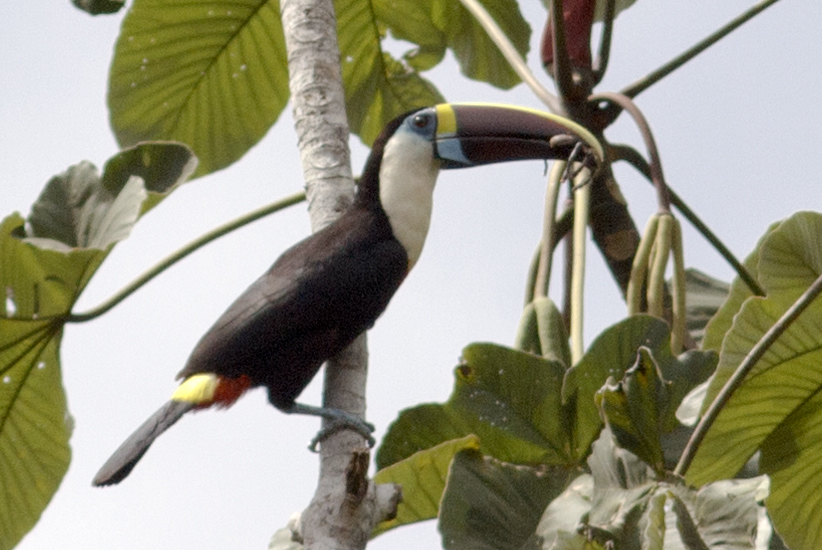
A white-throated toucan eating a large spider in Guyana. Photo: Sean McCann.
Insectivorous birds such as great tits eat a variety of arthropods including insects and spiders. Early in their nesting season, spiders comprise up to 75% of the food great tit parents bring to their chicks!
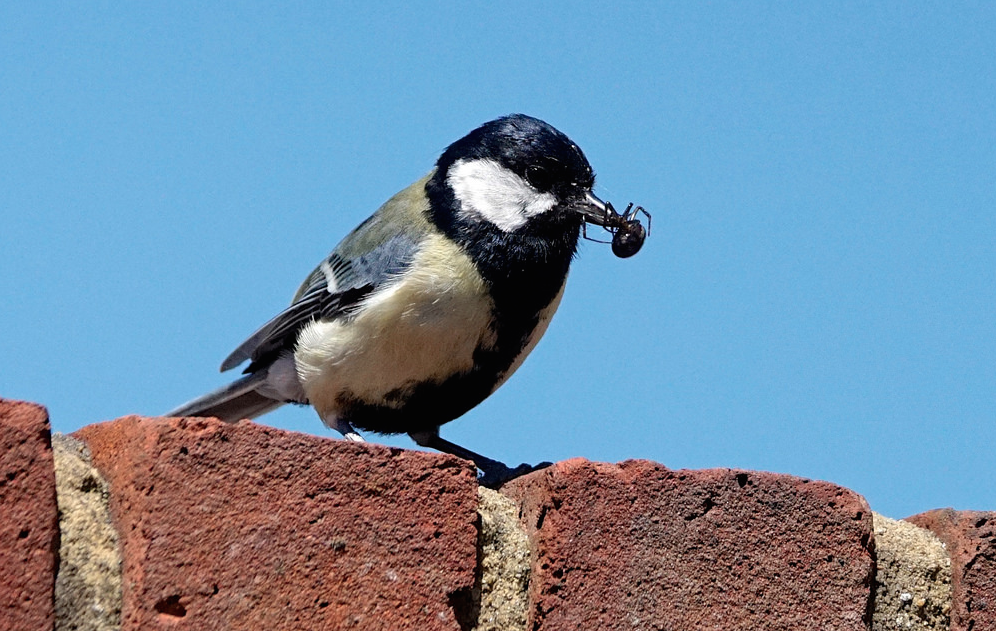
Great tit (Parus major) carrying a false black widow spider – probably a meal for one of its offspring. Photo: Cliff, used with permission.
Spiders are also major predators of other spiders. Some wolf spider (family Lycosidae) species may even be some of their own most important predators. Wandering hunters like wolf spiders and jumping spiders tend to be opportunistic predators and will take most anything they come across, including other spiders.
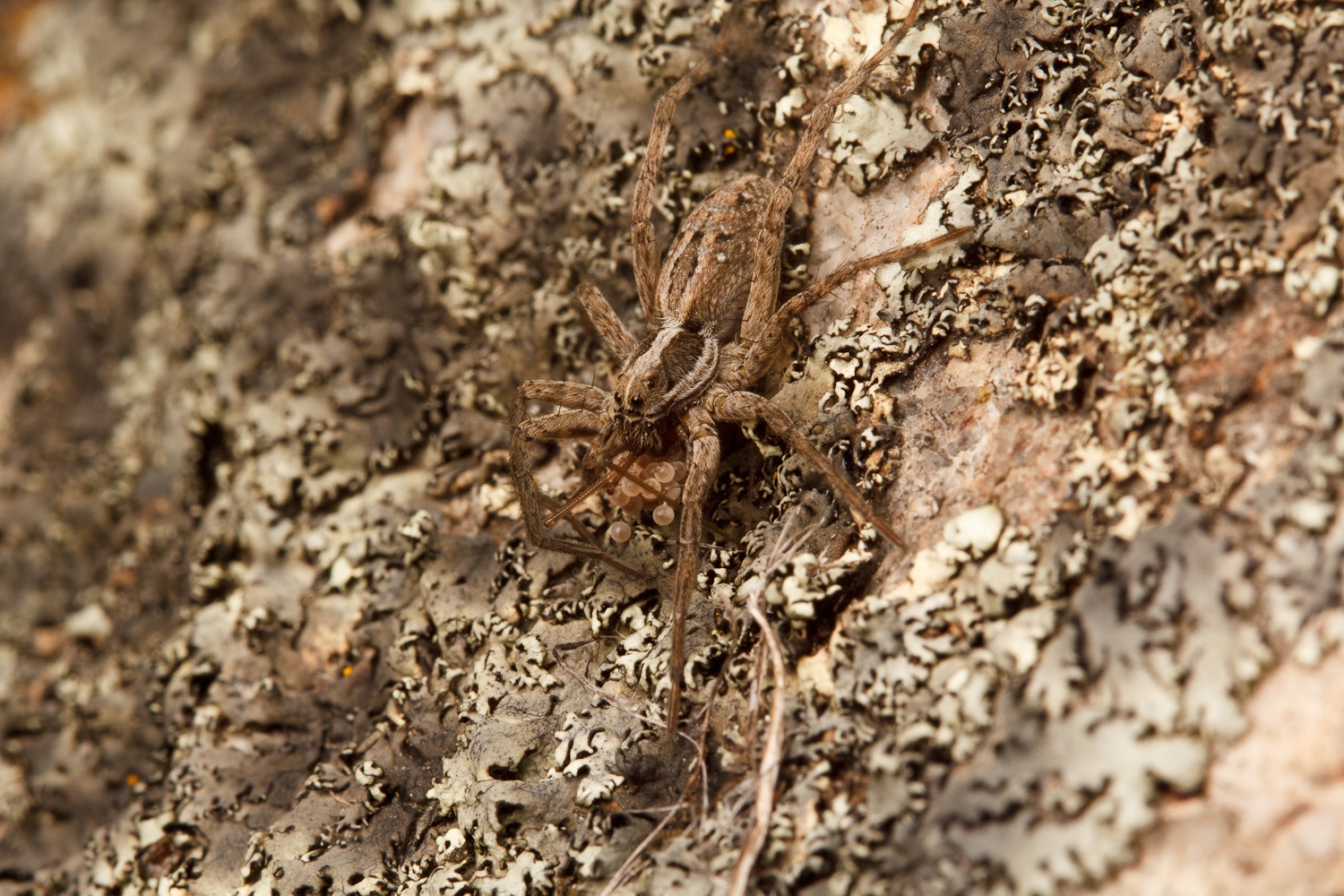
Wolf spider (Lycosidae) eating a female pholcid that was carrying her egg sac – a nutritious bonus snack! Photo: Sean McCann
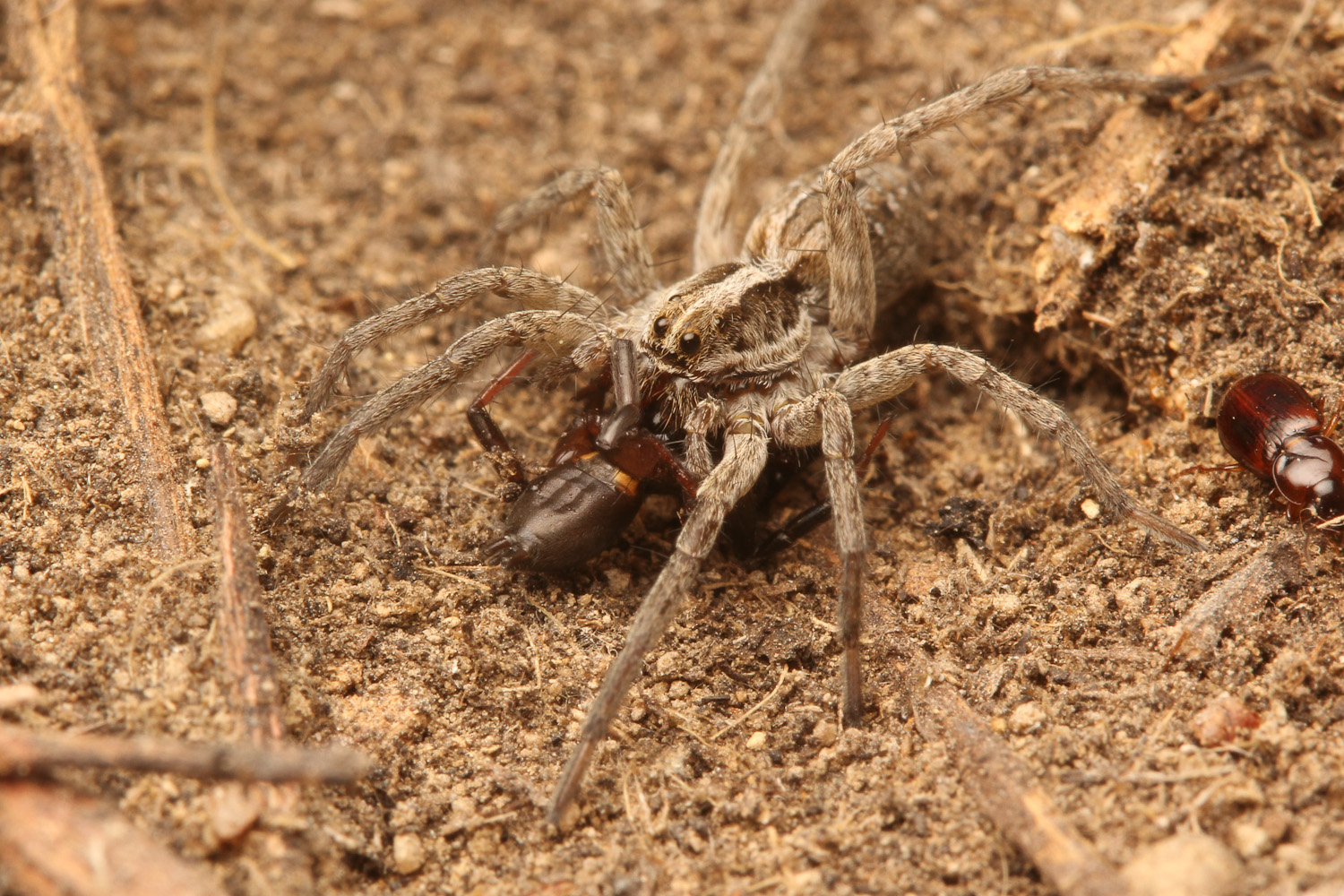
Another wolf spider (Lycosidae) eating a ground spider (Gnaphosidae). Photo: Sean McCann
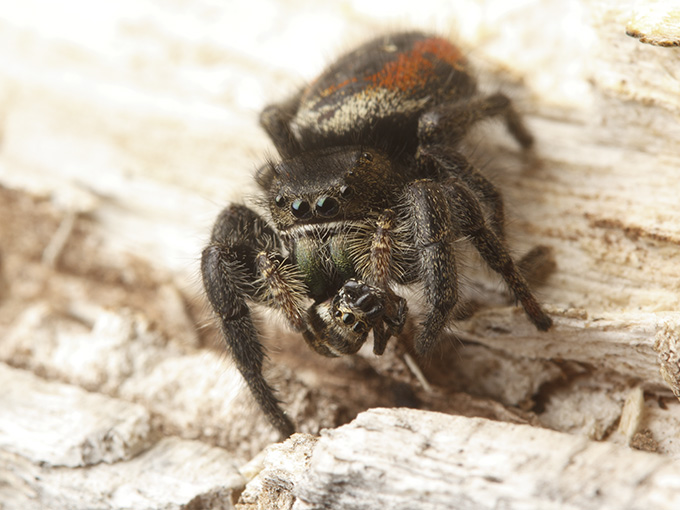
A large female jumping spider (Phidippus) eating a much smaller zebra jumper (Salticus scenicus) Photo: Sean McCann
Some species even specialize on other spiders! Cellar spiders (Pholcus phalangiodes) not only capture insects and spiders using their own webs, but also enter the snares of other spiders and trick the owners into thinking they are prey by vibrating the silk lines. When the resident spider approaches what it thinks will be its next meal, it soon becomes dinner itself. The cellar spider’s incredibly long legs allow it to keep a safe distance while it subdues much larger spiders by wrapping them with silk.

Cellar spider (Pholcus phalangiodes) wrapping a much larger spider (possibly a lycosid) with silk in preparation for a very filling meal. Photo: Karla Thompson, used with permission.
Perhaps the most fearsome enemies of spiders are spider wasps in the family Pompilidae. Huge ‘tarantula hawks’ in the genus Pepsis (they can be up to 8 cm long with a 10 cm wingspan!) can take even very large tarantulas. First the wasp stings the spider, paralyzing it almost immediately. But things get much, much worse from there.
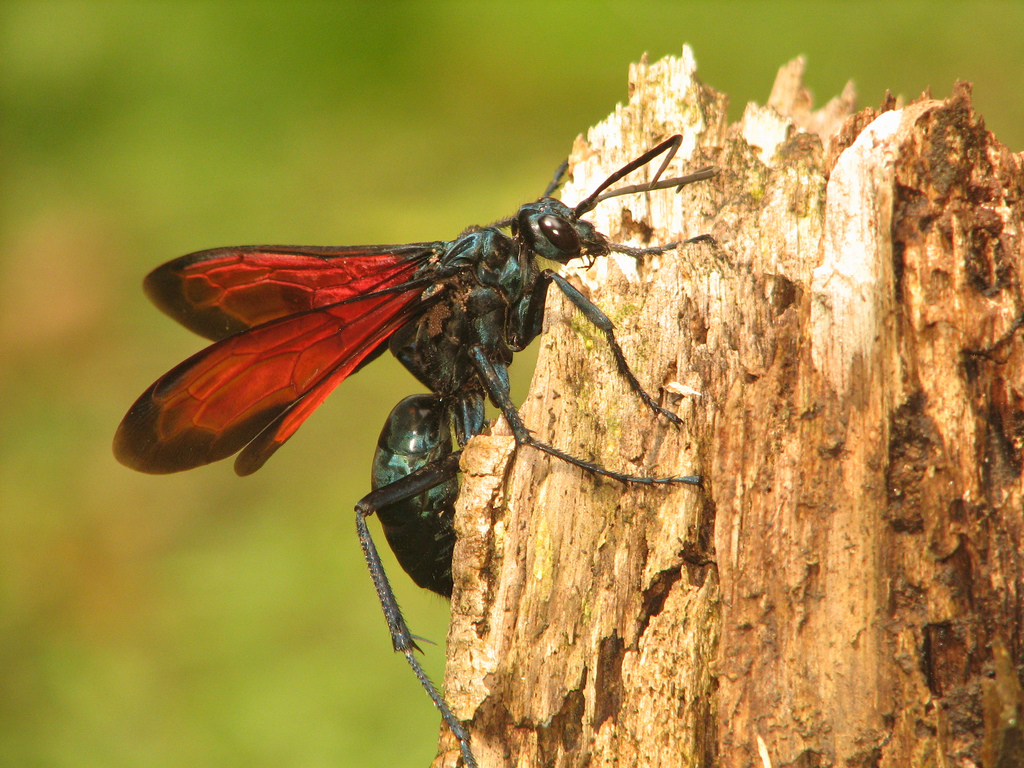
Tarantula hawk (Pepsis sp.) in French Guiana. This enormous wasp is 3 inches (8 cm) long! Photo: Sean McCann.
The wasp drags the paralyzed tarantula into a burrow, and lays a single egg on its abdomen. The spider remains paralyzed and trapped underground until eventually it meets its gruesome demise when the wasp larva emerges and begins to eat it alive.
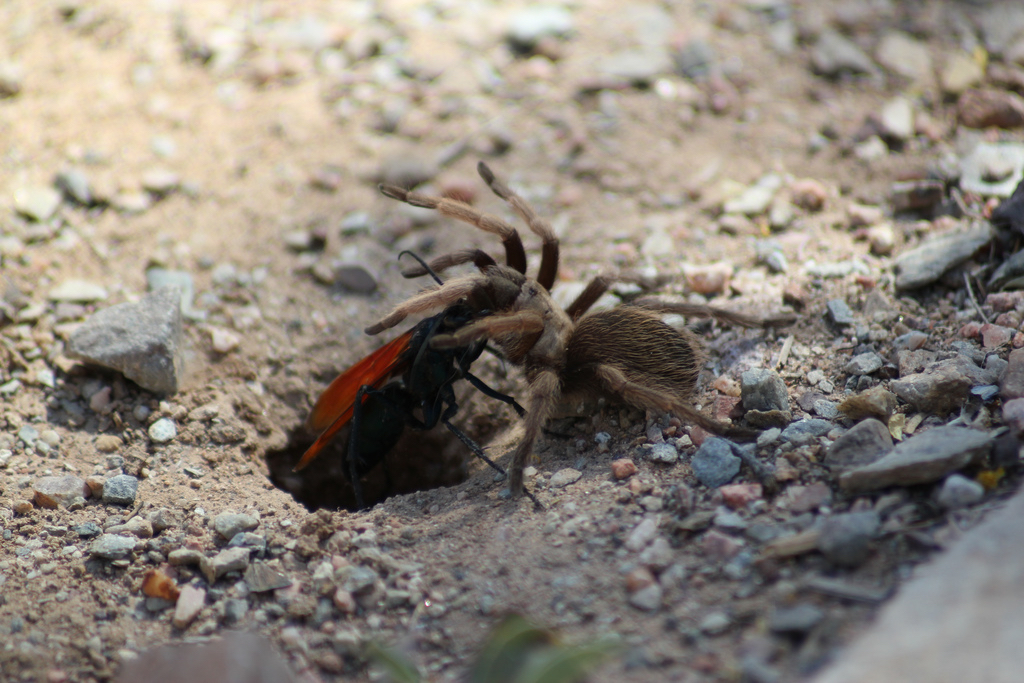
A spider wasp dragging its victim (a paralyzed tarantula) into a burrow where it will become food for a baby wasp. Photo: David Crummey, licensed under CC BY 2.0
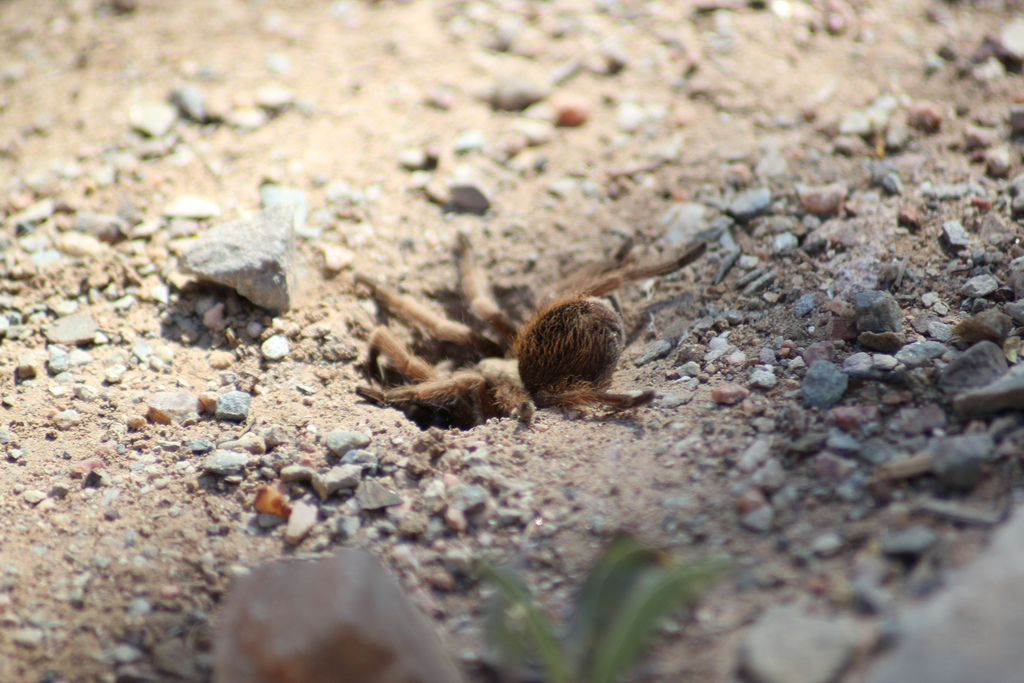
Poor spider! Photo: David Crummey, licensed under CC BY 2.0
So birds, spiders, and wasps are regular spider-eaters, but many others animals also partake now and then. Here are a few occasional predators of spiders:
A toad’s diet may be up to 5% spiders.
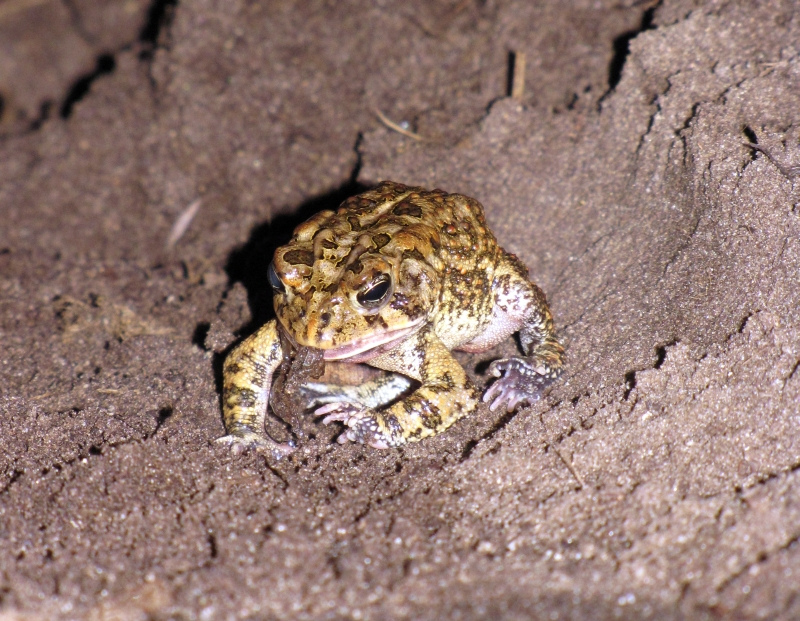
Southern toad, Anaxyrus (Bufo) terrestris, eating a spider. Photo: Scott Beazley, licensed under CC BY 2.0
Lizards also eat spiders. In the Bahamas and the Caribbean, islands without anoles have 10 to 30 times as many spiders as islands without these lizards, suggesting that they can be rather important predators.
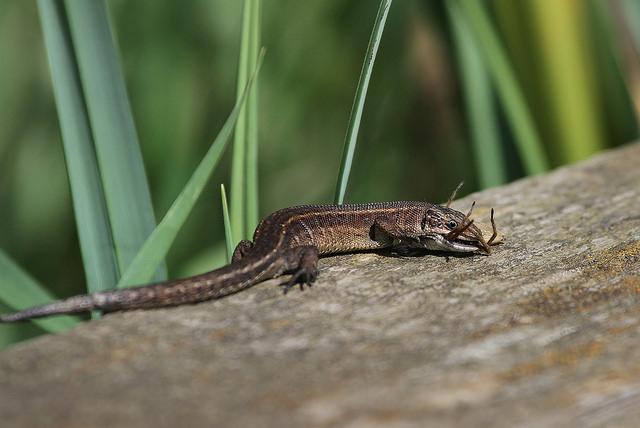
A lizard eating a spider. Photo: Jo Garbutt, licensed under CC BY 2.0.
Monkeys and humans also sometimes eat spiders! Fried tarantulas are a delicacy in some places in the world, including Cambodia. Although entomophagy (eating insects) is becoming popular as a more sustainable alternative to meat, I have to say that I’m not a big fan of the idea of eating tarantulas, which are slow-growing and long-lived creatures.
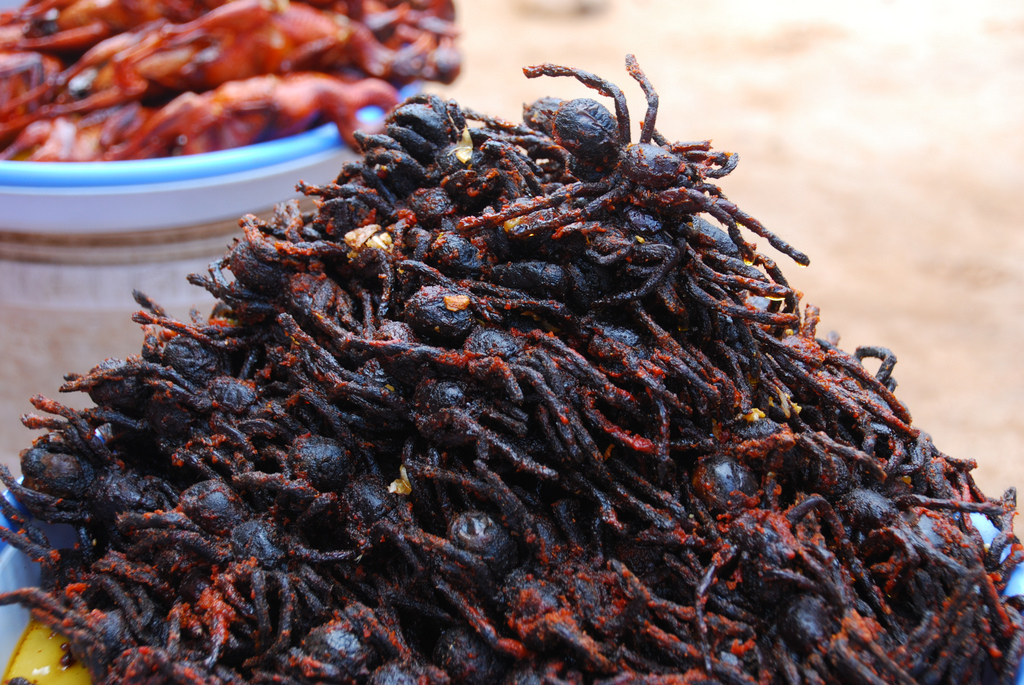
Fried tarantulas in Phnom Penh, Cambodia. Photo: Matthew Stevens, licensed under CC BY-NC-ND 2.0.
Finally, fish, bats and shrews also eat spiders occasionally. This certainly isn’t an exhaustive list, but I hope it gives you an idea of the range of animals that eat spiders. Stay tuned for future posts on some of the surprising things that spiders eat!
References
Edgar, W. D. (1969). Prey and predators of the wolf spider Lycosa lugubris. Journal of Zoology, 159(4), 405-411.
Foelix, R. (2010). Biology of spiders. Oxford University Press.
Gunnarsson, B. (2007). Bird predation on spiders: ecological mechanisms and evolutionary consequences. Journal of Arachnology, 35(3), 509-529.
Jackson, R. R., & Brassington, R. J. (1987). The biology of Pholcus phalangioides (Araneae, Pholcidae): predatory versatility, araneophagy and aggressive mimicry. Journal of Zoology, 211(2), 227-238.
Naef‐Daenzer, L., Naef‐Daenzer, B., & Nager, R. G. (2000). Prey selection and foraging performance of breeding Great Tits Parus major in relation to food availability. Journal of Avian Biology, 31(2), 206-214.
Nyffeler, M., & Knörnschild, M. (2013). Bat predation by spiders. PLOS ONE, 8(3), e58120.
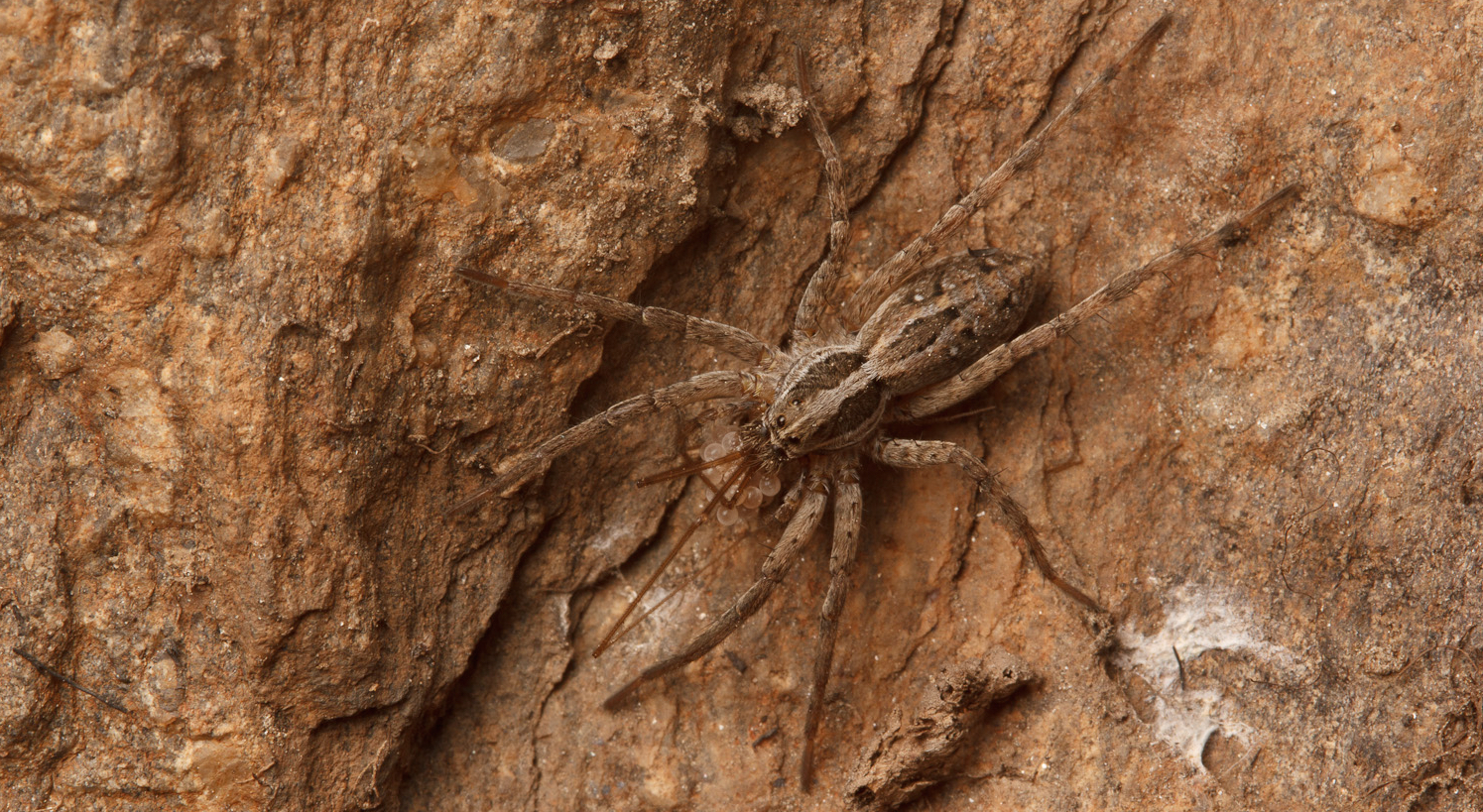
What a fascinating post! I did read somewhere that Great Tits start off by feeding caterpillars to their nestlings but at some point switch to spiders. I’ve certainly seen Long-Tailed Tits combing through cobwebs and flying off with a beakful of arachnids…
Thanks for commenting! Yes, the great tits apparently switch between caterpillars and spiders during the nesting season according to which one is the more profitable prey!
Great post as always Catherine. So many neat examples, like Portia jumping spiders! When I was a kid I caught a couple of Lacerta vivipara (viviparous lizard). I could not get them to feed, however. However, when I introduced a couple of wolf spiders, the lizards reacted to the quick movement of the spiders and caught and ate them. I did release the lizards back to where I found them by the way!
Thanks for commenting Staffan! Yes, lots more spider-eating spiders that I missed here! Love your story about lizards eating wolf spiders! I would love to have witnessed that 🙂
Excellent post Catherine!! I always enjoy reading your work!! An interesting note – A hoard of parasitic wasps recently emerged from one of our wild-collected black widow spider egg sacs…The wasps are currently stored in our freezer awaiting identification. The makings of nightmares…
Interesting! (I decided to focus just on true predators here, but lots could be said about parasites as well!) Alex Wild posted a really neat photo of a parasitic fly that emerged from a widow egg sac recently on twitter: https://twitter.com/Myrmecos/status/605920886223298561
Please let me know when you have an ID for yours!
Pingback: Spiderday (the eighth) | Arthropod Ecology
Pingback: Morsels For The Mind – 19/06/2015 › Six Incredible Things Before Breakfast
Catherine,
A regular over at Jerry Coyne’s Why Evolution is True Web site, “quiscalus,” referred me here after I posed a question, and this would seem to be a good post to ask it on.
I’ve got lots of black widows around my home in Tempe Arizona — and no question about the ID; the hourglass is quite prominent. But yesterday I noticed a couple different orbs at the periphery of a couple different cobwebs. One was maybe a foot across, another about half that. Neither was looking especially neat and both are worse this morning, so I’m guessing the builders are, as it is sometimes said, “pining for the fjords.”
But that still led me to wonder what would cause an orb weaver to build a web in such close proximity to a black widow. (The black widows are very well established, so I’m pretty sure they were here first.) Were the orb weavers simply foolish and a tasty snack for the black widows? Might they prey on the black widows? Is there some sort of mutual benefit going on?
Thanks,
b&
Hi Ben,
Really interesting question – thanks for posting! I’m not sure what’s going on here, but it’s certainly possible that the orb-weavers were eaten by black widows. Alternatively, they might have moved on to different websites.
At the field site where I work with black widows, webs often overlap (in fact immature widows share webs to some extent and tolerate one another quite well), not only with the webs of other widows but also the sheet-webs of hobo spiders and giant house spiders. Occasionally a widow will eat one of these other spiders, but it seems that in general there’s enough food to go around. Black widows prefer to build webs near existing webs, presumably because that means that it’s a profitable location.
Your orb-weaver situation is a bit of a puzzle. Although black widows do eat flying insects, they also eat a lot of crawling insects & athropods, so they should not be direct competitors with orb-weavers, who catch mainly flying insects. It could be that the orb-weavers are (were?) using the black widow webs as a cue indicating abundant prey, and “hoping” to catch the flying insects that the widows might miss. I don’t think it’s likely that the orb-weavers were there to prey on the widows. This is all speculation though!
If the orb-weavers were in fact eaten, you should be able to see their carcasses in the widows’ webs – after feeding, the exoskeletons of widows’ prey remain intact. I would love to hear if you make any further observations!
Thanks, Catherine, for the speculation.
I just had a look. I didn’t see any spider carcasses…but I did see a couple small spider non-carcasses — moving, living spiders about a quarter of an inch across, leg-tip to leg-tip. Yellowish / pale brown. They’re too small for me to really make out any details. They weren’t in the middle of any obvious orb, though…kinda just suspended in midair, seeming. And this is at about knee-height, whereas the decrepit orb is at about shoulder-height — with plenty of cobwebs all around.
I imagine a full census would reveal a surprising amount of biodiversity….
b&